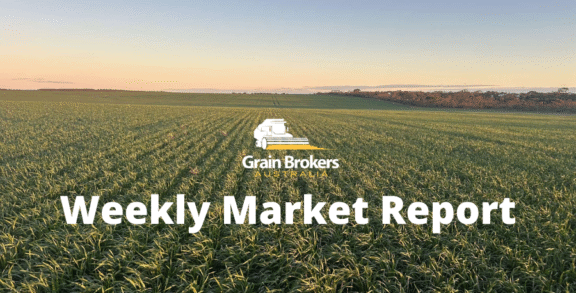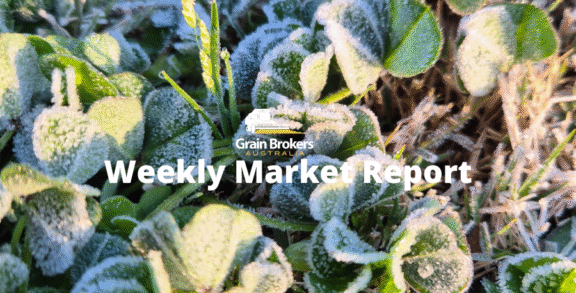
All dressed up with nowhere to go…
A deal has supposedly been done, Chicago Board of Trade (CBOT) soybean futures moved 2.5 per cent higher last week in anticipation of some sales, but the market is still waiting for clarity, and action, around the trade truce between the United States (US) and China.
Early last week the White House stated that there would be an immediate resumption to agricultural trade following the handshake agreement at the G20 summit in Argentina earlier in the month. Not much has been said since, but The Don took to Twitter on Friday saying that the “China talks are going well”. What does that mean?
There were rumours emanating from China late in the week that Beijing had approved the purchase of 5 million metric tonnes (MMT) of US soybeans. In a supposed gesture of good faith, it is believed that state-owned companies Sinograin and COFCO had been instructed to buy 3MMT and 2MMT respectively.
Whilst such purchases would certainly be welcomed by the US farmer, they would hardly put a dent in the huge US stockpile. Even though CBOT soybean futures have risen in all but one trading session in the last week, the prospects of a record Brazilian crop will more than likely slow any further gains until significant US sales are confirmed.
On the wheat front, Egypt reported that they have purchased 350 thousand metric tonnes (KMT) in the latest General Authority For Supply Commodities (GASC) tender. Russia continues to dominate with a total of 290KMT for shipment in the last ten days of January 2019. The remainder (one panamax cargo) went to their Black Sea adversary, Ukraine.
The average purchase price was just under US$253 cost and freight (C&F), which is very similar to the November tender price. However, it is not price that seems to be the biggest issue for the Egyptian government at the moment. They have not issued letters of credit for sixteen wheat cargoes purchased in recent tenders. The issue apparently effects around 945KMT, some of which arrived at Egyptian ports in late November.
Such issues are not new for Egypt but the interesting difference this time is Egypt’s net foreign reserves were US$44.513 billion at the end of November. This is much higher than last time and is more than enough to cover the cargoes in question. However, the major concern for the trade is a statement from GASC saying that Cairo’s ministry of finance had told them that nothing will happen until January. There are plenty more cargoes scheduled to arrive between now and then.
It seems that the finance issue is not confined to Egypt. Zimbabwe’s biggest flour mill was forced to close last week due to a lack of working capital and fellow African countries, such as Tunisia, have been experiencing extreme payment problems in recent times. Nonetheless, the GASC issue is certainly the market’s major credit concern for the moment.
Global barley news is still dominated by the anti-dumping action instigated by China against Australia last month. Under the World Trade Organisation (WTO) rules the earliest that China can impose tariffs, bans or other penalties on Australian barley is the 20th January next year. However, it is believed that technicalities behind the action mean that it may be as late as the end of February (or even early March) before any possible trade restriction can actually take effect.
This has seen a mad scramble to ship existing business early so that it arrives before any constraint commences. No doubt this was the reason behind the flurry of activity on the Western Australian shipping stem in late November. As much as 1.2mmt of forward malting and feed barley sales to China are believed to be on books of Australian exporters.
Despite the government action, the Chinese consumer needs this barley to carry on their regular business. Consequently, they are pushing exporters to ship as soon as possible. Traders are shuffling their export program. Wheat cargoes are being delayed so that barley can take the shipping slots. In some instances, this means two handy size cargoes are being booked instead of one panamax. No doubt there are additional costs as a result.
Word is many of the Chinese consumers are doing all in their power to assist the process. Buyers are switching cargos and letters of credit, opening letters of credit early and even bearing some of the additional costs in order to facilitate the immediate execution of their purchases.
In the meantime, the size and quality of the Australian barley crop is improving as harvest progresses, particularly in Western Australia. Only a few weeks ago many were scoffing at the suggestion of 4mmt in the west. Some in the trade are now quietly saying it could be more than 4.5mmt. This would make it bigger than 2016/17.
Heavier, plumper grain has also seen malting barley selection rates in Western Australia continue to increase as the barley harvest moves into the southern Kwinana and Albany zones. With almost 3.7mmt of barley received, it is now running at 38 per cent. This compares to 32 per cent a couple of weeks ago. The Albany zone is by far the best performing zone with a selection rate of almost 49 per cent. I guess the biggest question here is how much of that is in the Malt2 bin?
With China out of the market, and Japan covered until at least February, malting barley premiums in Western Australia have been squeezed into as low as AU$10 over the last week. This has certainly surprised many and is the lowest spread the market has seen this season.
Unfortunately, it is basic supply and demand economics at play. Production is higher than expected in the key export states, but our key customer is out of the game. It is simply too risky for exporters to make further sales and the Chinese consumer is not looking to buy for fear of having to pay a tariff if the anti-dumping dispute is not resolved.
The result is a bigger barley crop with no home. Better quality but no party invitations. All dressed up with nowhere to go.
Peter McMeekin is a consultant to Grain Brokers Australia. Call 1300 946 544 to discuss your grain marketing needs.





